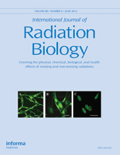
INTERNATIONAL JOURNAL OF RADIATION BIOLOGY
Scope & Guideline
Shaping the Future of Radiological Practices
Introduction
Aims and Scopes
- Biological Effects of Radiation:
Research on the cellular and molecular mechanisms by which radiation affects biological systems, including DNA damage, cellular responses, and the long-term consequences of exposure. - Radiation Therapy and Medical Applications:
Studies on the application of radiation in medical treatments, particularly oncology, focusing on improving therapeutic outcomes and minimizing side effects. - Radiation Dosimetry and Measurement:
Development and validation of methods for measuring and estimating radiation doses in various contexts, including clinical settings and environmental assessments. - Environmental Radiation and Ecological Impact:
Investigations into the effects of radiation on ecosystems, wildlife, and environmental health, with a focus on understanding the implications of radiation exposure on biodiversity. - Radiation Protection and Risk Assessment:
Research aimed at understanding and mitigating the risks associated with radiation exposure, including the development of guidelines and recommendations for radiation safety. - Transgenerational Effects of Radiation:
Exploration of how radiation exposure can affect not only individuals but also subsequent generations, focusing on genetic and epigenetic changes.
Trending and Emerging
- Radiation and Immune Response:
Increasing focus on how radiation affects immune system functioning, including studies exploring radiation-induced bystander effects and their implications for health. - Advanced Therapeutic Techniques:
Research on innovative radiation therapies, including combination therapies and novel radiopharmaceuticals, reflecting an ongoing quest to enhance treatment efficacy and patient outcomes. - Nanotechnology in Radiation Biology:
Emerging studies on the use of nanoparticles for enhancing radiation effects or as protective agents against radiation damage, indicating a trend towards integrating nanotechnology with radiation biology. - Personalized Radiation Medicine:
A growing interest in personalized approaches to radiation therapy, including individualized dosimetry and treatment plans based on genetic and molecular profiling of patients. - Bioinformatics and Computational Modeling:
The application of bioinformatics and computational models to predict radiation effects and responses, demonstrating a shift towards data-driven research methodologies. - Environmental and Ecological Risk Assessment:
An increasing number of studies assessing the ecological impacts of radiation exposure, particularly in the context of nuclear accidents and environmental monitoring.
Declining or Waning
- Historical Studies of Radiation Exposure:
Research focusing on historical data and case studies related to radiation exposure, such as studies on atomic bomb survivors, has seen a decline as new methodologies and technologies emerge. - Basic Research on Radiation-Induced Mutagenesis:
Although foundational, studies that solely focus on the mutagenic effects of radiation without broader applications are becoming less frequent, as researchers seek more integrative approaches. - Effects of Low Dose Radiation in Non-Malignant Conditions:
Investigations into the effects of low-dose radiation on non-cancerous conditions have seen a reduction, possibly due to a shift towards understanding cancer-specific responses. - General Epidemiological Studies without Molecular Insights:
Epidemiological research that lacks molecular or mechanistic insights is declining, as there is a growing emphasis on studies that combine epidemiology with molecular biology.
Similar Journals
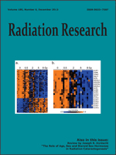
RADIATION RESEARCH
Unraveling the mysteries of radiation for a healthier tomorrow.RADIATION RESEARCH is a prestigious journal published by the RADIATION RESEARCH SOC that serves as a vital resource for professionals and researchers in the fields of biophysics, radiation science, and radiology. Established in 1954, this journal has consistently advanced the study of radiation's effects on health and the environment, bridging fundamental and applied research. It boasts an impressive impact factor reflected in its quartile rankings, including Q2 in Biophysics and Q1 in Radiation, making it a highly regarded publication within its discipline. Researchers will find valuable insights through rigorous peer-reviewed articles that explore innovative methodologies and findings related to radiation exposure, imaging technologies, and the biological consequences of radiation. Although the journal does not currently offer open access, it remains a vital reference for academia and industry, fostering a deeper understanding of radiation sciences and their implications for future research and public health.

Nuclear Physics and Atomic Energy
Unveiling the potential of high-energy physics.Nuclear Physics and Atomic Energy is a reputable open-access journal that focuses on the fields of nuclear physics and high-energy physics, providing a forum for researchers, professionals, and students to share their findings and advancements. Published by the Institute of Nuclear Research, National Academy of Sciences of Ukraine, this journal has been committed to disseminating knowledge since its inception in 2006, ensuring that scientific advancements remain accessible to a global audience. With an ISSN of 1818-331X and an E-ISSN of 2074-0565, the journal features a diverse array of articles that span the continued exploration and application of nuclear phenomena. Although currently categorized in the Q4 quartile for Nuclear and High Energy Physics in 2023, the journal is steadily working towards increasing its impact and engagement within the academic community. With a Scopus rank of #74 out of 87 in its category, it serves as a valuable resource for advancing crucial research in a vital scientific area. Researchers are encouraged to contribute their innovative studies to foster collaboration and knowledge sharing in this dynamic field.

Radiation Detection Technology and Methods
Advancing the Frontiers of Radiation ScienceRadiation Detection Technology and Methods is a prominent academic journal published by Springer Singapore Pte Ltd, dedicated to advancing the field of nuclear and high-energy physics, as well as nuclear energy and engineering. Established in 2017, this journal provides a platform for the dissemination of pioneering research and innovative methodologies in radiation detection technology. As of 2023, it holds a commendable Q2 ranking in both the categories of Nuclear and High Energy Physics and Nuclear Energy and Engineering, underscoring its significance in fostering scholarly discourse within these vital fields. With ISSN 2509-9930 and E-ISSN 2509-9949, the journal aims to cater to a diverse audience of researchers, professionals, and students, emphasizing open access to knowledge. The journal's contributions are particularly crucial for those engaged in the development of safer and more efficient radiation detection techniques, ultimately bridging the gap between theory and practical applications in energy security and health physics. For researchers seeking a dedicated outlet for their work, Radiation Detection Technology and Methods represents an invaluable resource and an opportunity to influence the future of radiation science.

Radiological Physics and Technology
Empowering research in radiological physics.Radiological Physics and Technology, published by SPRINGER JAPAN KK, is a prominent journal that serves as a crucial resource in the multidisciplinary fields of medicine and radiation sciences. With an ISSN of 1865-0333 and an E-ISSN of 1865-0341, the journal has been converging impactful research from 2008 to 2024. It holds a commendable position in academic rankings, currently classified in Q2 in Physical Therapy, Sports Therapy and Rehabilitation and Radiation, along with Q3 for Medicine (miscellaneous) and Radiology, Nuclear Medicine and Imaging. The journal is well-regarded in the academic community, reflected in its Scopus rankings that place it in the upper tiers of its respective categories. Although it currently does not offer Open Access, Radiological Physics and Technology remains a pivotal publication for researchers, academics, and practitioners seeking to advance knowledge and foster innovation in radiological science. Its commitment to disseminating high-quality research ensures its continued relevance and importance within these fields.
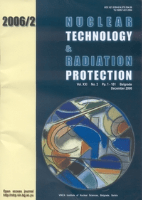
Nuclear Technology & Radiation Protection
Exploring the frontiers of nuclear energy and safety.Nuclear Technology & Radiation Protection is a distinguished open-access journal published by the VINCA Institute of Nuclear Sciences, Serbia, dedicated to advancing knowledge in the fields of nuclear energy and radiation safety. Since its inception in 2002, the journal has been an essential resource for researchers, professionals, and students, offering a platform for the dissemination of high-quality research that contributes to the safe and efficient use of nuclear technology. With an impressive Q2 ranking in both the Nuclear Energy and Engineering and Safety, Risk, Reliability and Quality categories for 2023, the journal reflects a commitment to excellence and relevance within its scope. It serves as a pivotal forum for sharing innovative findings, addressing current challenges, and contributing to the global discourse on nuclear safety and technology. The journal is indexed in Scopus, enhancing its visibility and impact in the academic community. By facilitating unrestricted access to its articles, Nuclear Technology & Radiation Protection continues to foster collaboration and engagement among scholars in the nuclear science domain.
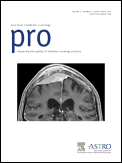
Practical Radiation Oncology
Pioneering New Paths in Patient OutcomesPractical Radiation Oncology is a premier journal published by Elsevier Science Inc., focusing on the critically important fields of Oncology and Radiology, Nuclear Medicine, and Imaging. With an ISSN of 1879-8500, this journal serves as an essential resource for professionals and researchers dedicated to advancing the practice and research of radiation oncology. Established in 2011 and continuing through 2024, it has quickly gained recognition, achieving a prestigious Q2 ranking in Oncology and an exceptional Q1 ranking in Radiology, Nuclear Medicine, and Imaging as of 2023. The journal, housed in New York, USA, provides a platform for innovative research and practical insights, aimed at enhancing therapeutic practices and improving patient outcomes. As part of its commitment to fostering scientific dialogue, it also features a range of articles, reviews, and clinical studies that cater to the diverse interests of its readers. Hard-copy availability combined with digital access ensures a broad reach for the latest advancements in the field.
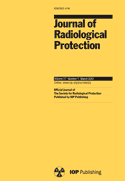
JOURNAL OF RADIOLOGICAL PROTECTION
Championing health through informed radiological studies.Journal of Radiological Protection, published by IOP Publishing Ltd, is a pivotal academic journal dedicated to advancing knowledge in the fields of radiology and radiation protection. Since its inception in 1988 and continuing through to 2024, this journal provides a platform for the dissemination of innovative research and critical reviews that explore the effects of radiation exposure on health and the environment. With an Impact Factor that places it among the Q3 category in Medicine, Public Health, Environmental and Occupational Health, as well as in Waste Management and Disposal, the journal is vital for professionals, researchers, and students keen on understanding the implications of radiological science. The Journal of Radiological Protection aims to contribute to improved practices and policies in radiation safety, making its findings essential for those involved in environmental health and public safety initiatives. Articles are accessible through various academic databases, ensuring widespread dissemination among the scientific community, thereby enhancing the journal's stature and influence in radiological research.

RADIOPROTECTION
Pioneering research for a safer, sustainable future.RADIOPROTECTION, published by EDP SCIENCES S A, stands as a pivotal journal in the multidisciplinary fields of Nuclear Energy, Public Health, and Environmental Safety. With an ISSN of 0033-8451 and an E-ISSN of 1769-700X, this journal delves into the crucial aspects of radiation protection and its interactions with health and environment, providing a platform for researchers and professionals to disseminate their findings and insights. Despite being classified in the Q4 quartile for Health, Toxicology and Mutagenesis in 2023, its Q3 status in prestigious categories such as Nuclear Energy and Engineering, and Public Health, underscores its relevance in contemporary academic discourse. The journal continues to expand its cachet with converged years of publication from 1977 to 1981 and 1988 to 2024, ensuring a rich history of scholarly contributions. Access options for interested readers include traditional subscriptions, allowing for comprehensive engagement with a broad range of topics surrounding safety, sustainability, and risk management. Whether you are a researcher, professional, or student, RADIOPROTECTION serves as an essential resource for expanding understanding and fostering innovation within its field.
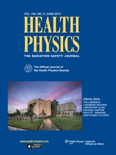
HEALTH PHYSICS
Innovating Solutions for Safe Radiation PracticesHEALTH PHYSICS is a leading academic journal dedicated to the study and dissemination of knowledge in the fields of radiology, epidemiology, and health toxicology. Published by Lippincott Williams & Wilkins, this esteemed journal has been a cornerstone of research since its inception in 1958, and it continues to foster important discussions and advancements in the discipline. With a notable impact factor and consistently ranking in the Q2 and Q3 quartiles across various categories in 2023, HEALTH PHYSICS serves as a vital resource for scholars, practitioners, and students seeking the latest insights and methodologies in the management of radiation exposure and its health implications. While the journal does not offer open access, it remains a critical platform for peer-reviewed articles that contribute to public health and environmental safety. The journal's comprehensive scope and historical significance underscore its importance in advancing knowledge and practices within its field, making it an essential read for anyone engaged in the multidisciplinary realms of health physics.
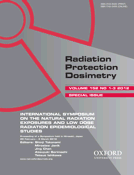
RADIATION PROTECTION DOSIMETRY
Pioneering research for a safer tomorrow in radiation protection.RADIATION PROTECTION DOSIMETRY is a vital academic journal dedicated to the field of radiation protection, published by Oxford University Press. With an ISSN of 0144-8420 and an E-ISSN of 1742-3406, this journal serves as a platform for groundbreaking research and developments in dosimetry, health physics, and radiation safety spanning over four decades since its inception in 1981. Recognized with a Q3 ranking in multiple categories including Medicine (miscellaneous) and Public Health, this journal plays a key role in disseminating important findings that inform policy, enhance practice, and promote the protection of both individuals and the environment from radiation hazards. While currently not available as Open Access, the journal's curated content is essential for researchers, professionals, and students dedicated to advancing knowledge in radiation protection and related areas. Interested readers will find the latest research trends, case studies, and reviews invaluable for their work and studies within this multidisciplinary domain.